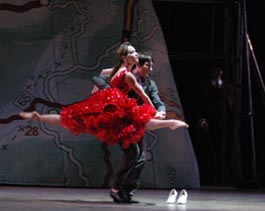There were some burning questions that sent me flying across the Atlantic to the fifth Arab Dance Platform (Moultaqa Leymoun 2016) in Lebanon: how is contemporary dance relevant for societies in which a sense of urgency and imminent danger are part of everyday life? What is the drive to create and perform this kind of transgressive physicality in countries for which dancing this way, and especially in public, is considered immoral and virtually illegal? And how does choreography serve as a form of political resistance?
The conference was a revelation. As the four-day opening of the Beirut International Platform of Dance (BIPOD) unfolded, twenty-two choreographers and six presenters from across the Middle East, joined by interested critics and curators, gathered for panel discussions on dance and activism. Choreographer and festival founder Omar Rajeh, and his Maqamat Dance Theatre, have been tenaciously building infrastructure in Beirut since 2002 to foster a Pan-Arab contemporary dance resurgence, including festivals, dance companies, networks, workshops, mentorships, studio and performance spaces. The festival mandate is a revolutionary manifesto: “Through introducing new ideas and concepts of dance and ‘the body,’ the company anticipates a new phase of artistic and social productivity, creativity, modernization and free expression.”
In Beirut, I discovered a ravishing but devastated city, one of emotional and architectural extremes. The 5000-year-old city is scarred with the archeological traces of numerous empires, earthquakes and wars, but also evident is the heroic rebuilding up out of each tragedy. Preferring to discover new cities by walking, I quickly learned that moving throughout the city on foot was to manoeuvre an obstacle course of slow tangles of disorderly traffic. New local acquaintances confirmed that, “We don’t like to follow rules here!” My hostel, Saifi Urban Gardens, was a social hub in the local Latin Quarter, with its café-restaurant, savvy baristas and rowdy weekend celebrations. Everyone danced with radiant fervour: shoulders lifting rhythmically, arms raised, bodies pulsing and undulating in unison. Dancing through the street and with others is a cultural lifeblood.
The choreography presented at the conference was frequently intense, even fierce. Imbued with a powerful sense of purpose and, of course, a search for identity, defying censorship, never doubting its inherent authenticity, Rajeh set the tone with Beytna, a massive, utopic community banquet of a choreographic event, with a meal prepared onstage exhorting us to “Come and eat Lebanon!” while four dancers and musicians from as many continents and dance and music orientations were seeking an un/common language. Although the dance compositions that followed sometimes adopted more familiar Euro-American forms, most plunged us into particularly “Arab World” aesthetics of the body-in-crisis-and-exhaltation, trance states and an artistic excavation of earlier civilizations (notably Persian). To my mind, the emblematic work was unquestionably Bassam Abou Diab’s physical theatre guide to survival. He asked us, “What can the body do when the bomb falls?” The answer: don’t resist, fall to the ground, collect power, think about your culture and identity. This dancing in dangerous times really transformed my thinking about the meaning of art.
Learn more >> maqamat.org
Tagged: Contemporary, Festivals, On the Ground, Presenting, Lebanon , Montréal , QC





